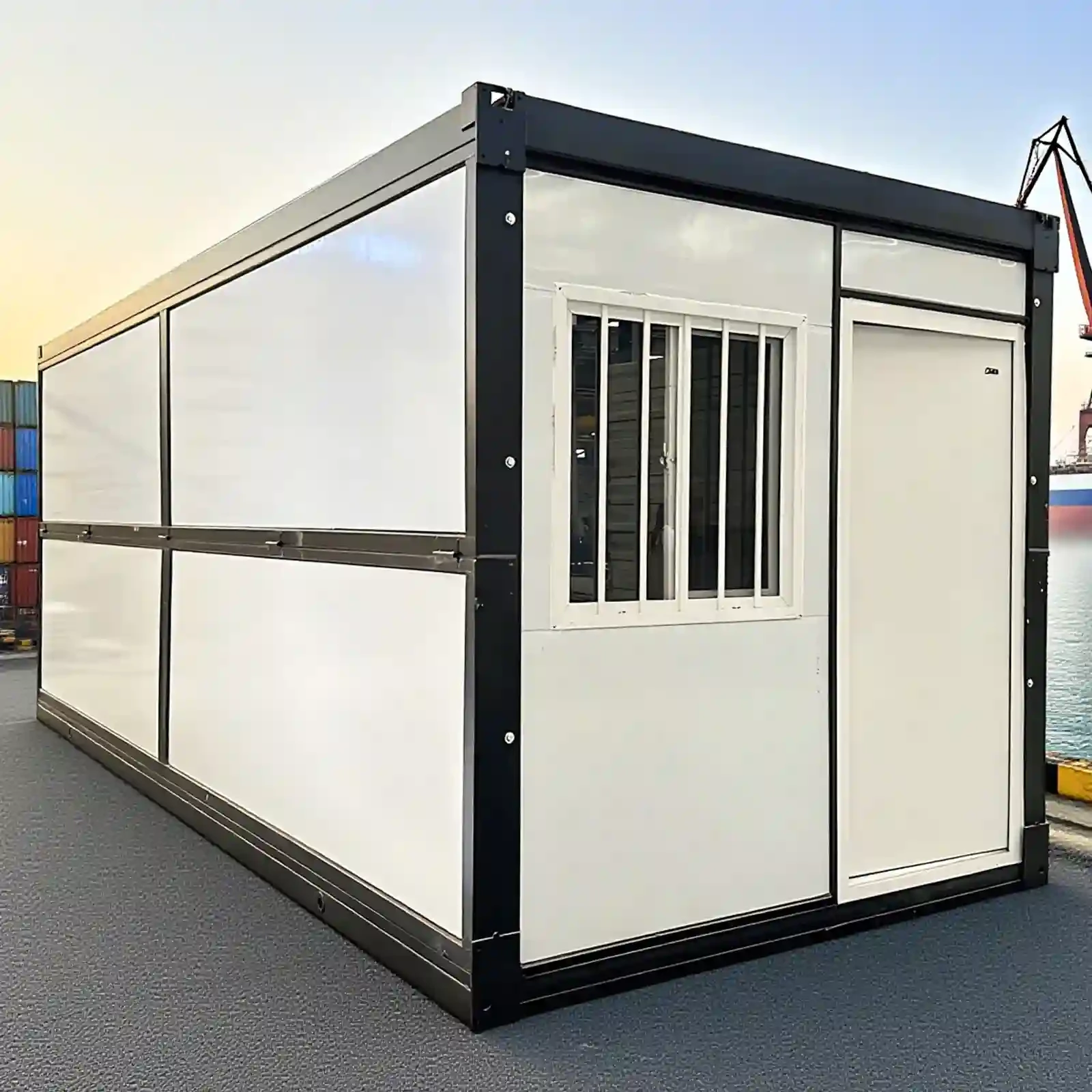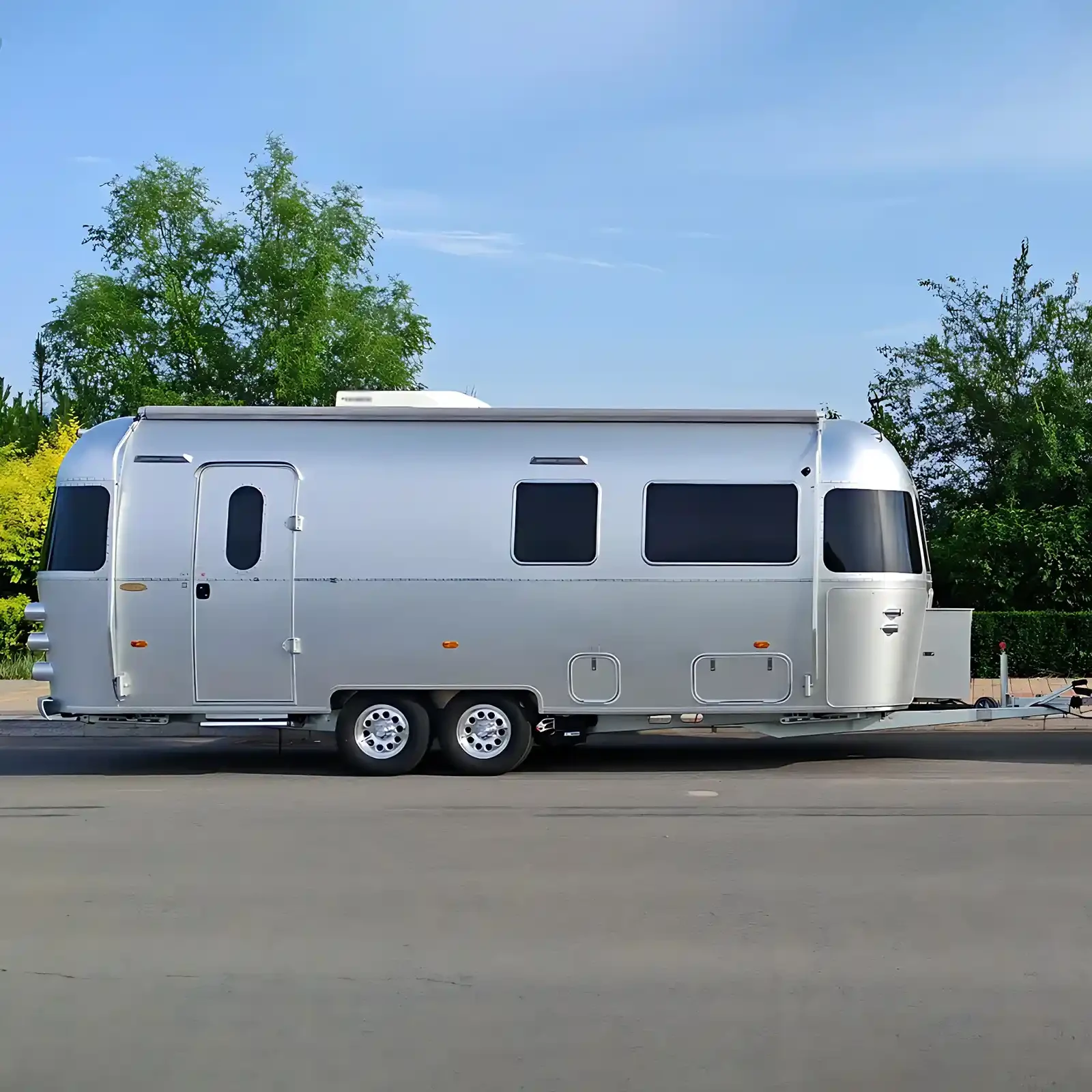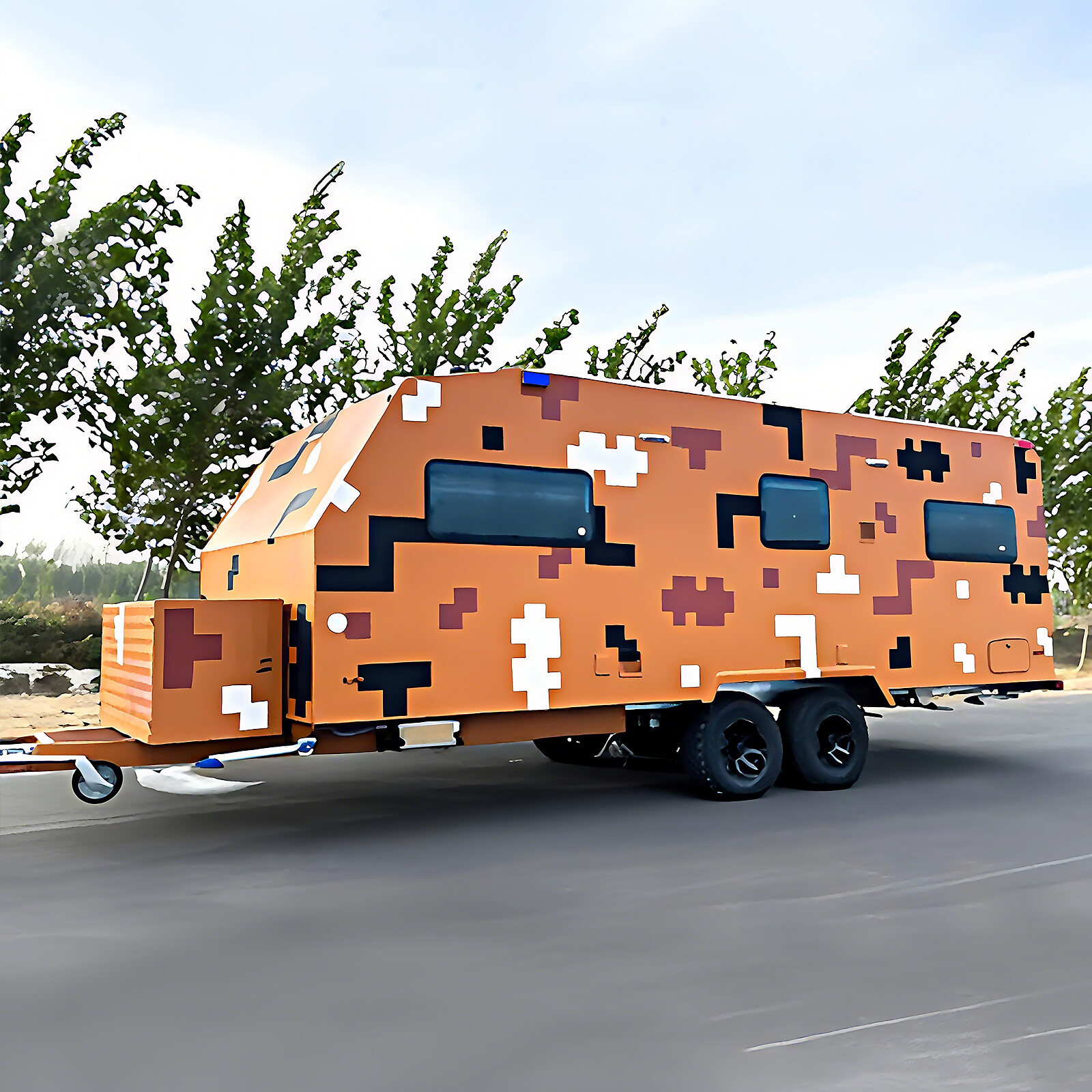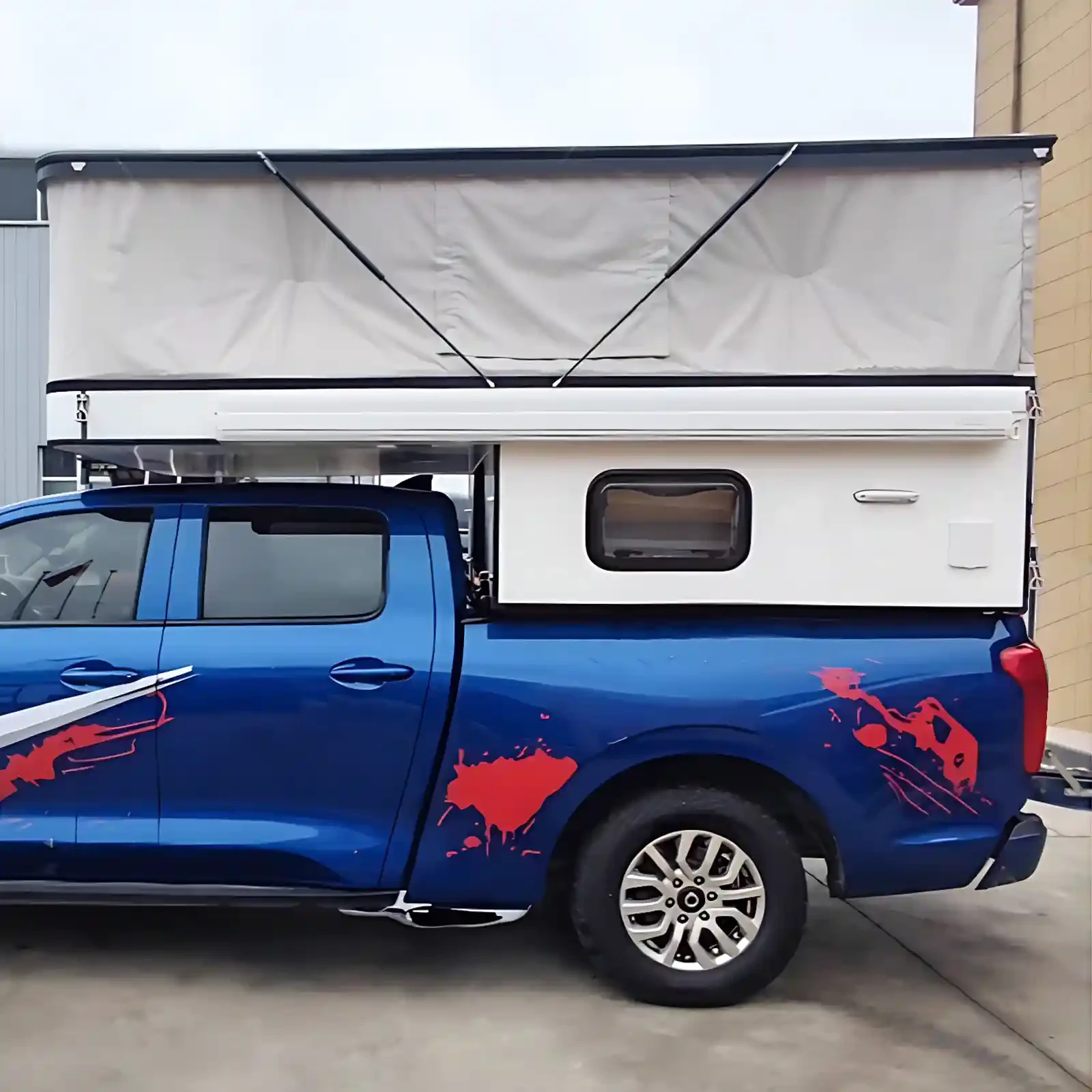In an era of burgeoning demand for flexible and personalized living, mobile capsule homes are becoming a popular choice. Ease of transportation is a key feature that has drawn considerable attention. Mobile capsule homes, with their unique design and professional transportation solutions, ensure efficient and convenient transportation.
The structural design of the space capsule house facilitates convenient transportation
Modular design
Mobile capsule homes often utilize a modular design concept. The entire capsule is divided into multiple independent, standardized modules, such as the main structure, interior, and bathroom components. These modules are meticulously prefabricated in the factory, with each module's size and weight carefully planned to account for the limitations of common modes of transportation, such as road and rail. For road transport, for example, a single module is typically limited to a width of less than 3 meters, a height of less than 4.5 meters, and a weight generally not exceeding 20 tons, ensuring smooth passage through various bridges and culverts and the load requirements of standard trucks. This modular design not only facilitates manufacturing but also significantly improves transportation efficiency. During transport, each module can be loaded separately onto a transport vehicle and quickly assembled upon arrival. Compared to traditional monolithic homes, this avoids the challenges of transport due to excessive bulk and weight.
Lightweight material application
To further enhance transportability, capsule homes tend to utilize lightweight materials. Aluminum alloy is often used for the main structure, characterized by its low density and high strength. Its density is approximately one-third that of steel, yet its strength meets the structural requirements of a capsule. This significantly reduces the weight of the capsule while maintaining stability. For example, a capsule main frame constructed of aluminum alloy can be 40%-50% lighter than a steel frame of the same specification. Furthermore, the enclosure structure often utilizes lightweight composite materials, such as sandwich panels. These materials are not only lightweight but also offer excellent thermal, heat, and sound insulation properties. The widespread use of lightweight materials reduces the load requirements of transport vehicles during the transport of capsule homes, allowing for a wider range of transportation options and increasing transportation flexibility.
Diverse modes of transportation enable convenient movement
Road transport
Road transport is the most common method of transporting mobile capsule homes. Due to their modular design and lightweight nature, ordinary flatbed trucks and semi-trailers can handle the task. Before transportation, staff will select a transport vehicle based on the size and weight of the capsule module and perform necessary modifications and reinforcements, such as installing specialized fixing brackets and tie-down devices, to ensure the module's stability during transport. During transportation, traffic regulations are strictly observed, and routes and speeds are planned appropriately based on road and weather conditions. For some extra-wide and extra-high modules, relevant transportation permits are obtained in advance, and escort vehicles are arranged to ensure safe transportation. The advantage of road transport lies in its high flexibility. The capsule home can be transported directly to its destination without the need for secondary transshipment, significantly reducing transportation time.
Railway transportation
Rail transport is an efficient option for long-distance or large-scale transport of capsule homes. Rail transport offers the advantages of high capacity, high speed, and relatively low cost. Capsule home modules can be loaded onto dedicated railroad containers or flatcars. The loading and securing methods for rail transport are professionally designed, using specialized fastening devices to securely attach the modules to the transport carrier, preventing movement during transport. Rail transport routes are relatively fixed and stable, less susceptible to weather and other factors, ensuring timely delivery of capsule homes to designated destinations. Upon arrival at the destination, road transport is used for final short-distance delivery, providing door-to-door transportation.
Water transport
For destinations near rivers, lakes, or coastal areas, water transport provides an economical and affordable way to transport mobile capsule housing. Capsule housing modules can be transported by barge or cargo ship. Before loading, the modules are waterproofed and moisture-proofed, and then stacked and secured appropriately based on the vessel's carrying capacity and cabin layout. The advantage of water transport is its low transportation cost, especially for large quantities. Furthermore, ships have a large transport capacity, allowing for the transport of multiple capsule housing modules at once. For example, in some tourist resort construction projects, large numbers of capsule housing modules are transported by water to islands or coastal scenic areas, effectively reducing transportation costs while ensuring the smooth progress of the project.
Professional transportation services ensure transportation safety and efficiency
Pre-transport planning and preparation
Before transporting a mobile capsule home, a professional transportation team conducts detailed planning and preparation. First, they thoroughly understand the size, weight, and structural characteristics of the capsule home and develop a personalized transportation plan. They plan the optimal transportation route based on the destination, traffic conditions, and transportation method. They also learn about height and weight restrictions for bridges and tunnels along the way to ensure a smooth transportation process. Furthermore, they inspect and maintain the transport vehicle or vessel to ensure proper function. They also prepare various securing and protective equipment, such as tie-down straps, cushioning pads, and tarpaulins, to ensure the safety of the capsule home during transportation.
Monitoring and management during transportation
During transportation, advanced monitoring technology is used to track and monitor transport vehicles and vessels in real time. Using GPS positioning, the transportation team maintains constant visibility of the transport vehicle's location, speed, and other information, enabling timely adjustments to transportation plans. Furthermore, the status of the space capsule housing modules is monitored, such as through sensors that detect vibration and tilt. Immediate action is taken to address any anomalies detected. Furthermore, a comprehensive communication mechanism is established, ensuring close contact between the transportation team and the shipper and consignee, providing timely feedback on transportation progress and any issues, ensuring a smooth transport process.
Installation and commissioning after arrival
Once the mobile capsule arrives at its destination, a professional installation team quickly begins installation and commissioning. According to a pre-defined installation plan, the modules are precisely assembled and connected to infrastructure such as water and electricity lines. The installation process is carried out in strict accordance with operating procedures to ensure quality. After installation, the capsule undergoes a comprehensive commissioning of all functions, including checking the sealing of doors and windows, the operation of water and electricity systems, and the cooling and heating performance of air conditioning and other equipment. This rigorous commissioning and testing ensures that the capsule is functioning properly, providing residents with a comfortable and safe living environment.
Mobile capsule homes, through rational structural design, diverse transportation methods, and professional transportation services, enable convenient and efficient transportation. This not only strongly supports their widespread adoption but also provides people with a more flexible and convenient living option. With the continuous development and improvement of transportation technology, the transportation of mobile capsule homes will become safer and more efficient, promoting the application of this emerging form of housing in even more areas.

 USD
USD
 GBP
GBP
 EUR
EUR






